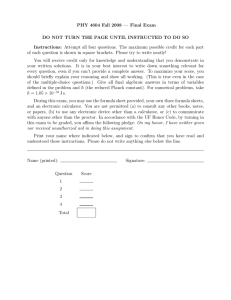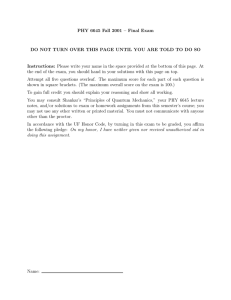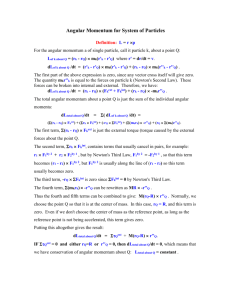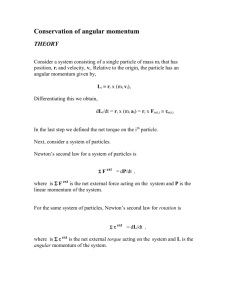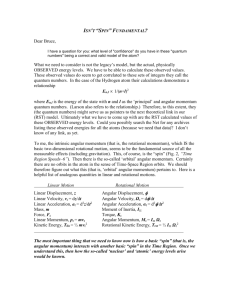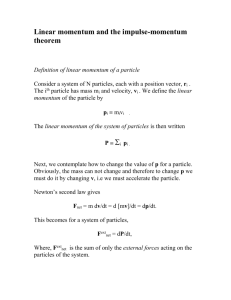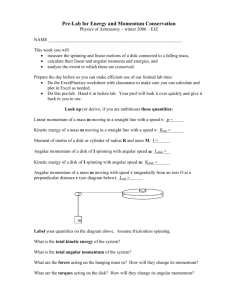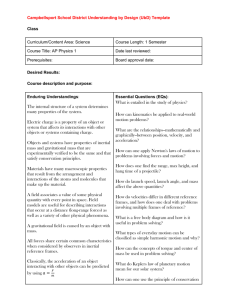PARTICLE PHYSICS
advertisement
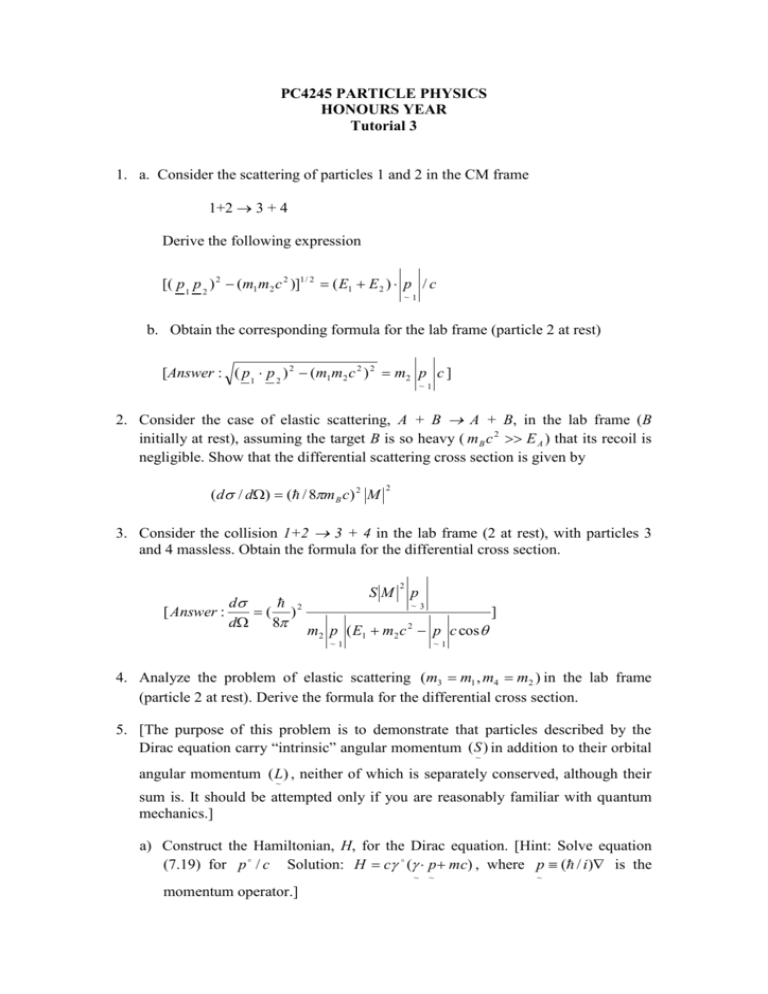
PC4245 PARTICLE PHYSICS HONOURS YEAR Tutorial 3 1. a. Consider the scattering of particles 1 and 2 in the CM frame 1+2 3 + 4 Derive the following expression [( p 1 p 2 ) 2 (m1 m2 c 2 )]1 / 2 ( E1 E 2 ) p / c ~1 b. Obtain the corresponding formula for the lab frame (particle 2 at rest) [Answer : ( p 1 p 2 ) 2 (m1 m2 c 2 ) 2 m2 p c ] ~1 2. Consider the case of elastic scattering, A + B A + B, in the lab frame (B initially at rest), assuming the target B is so heavy ( mB c 2 E A ) that its recoil is negligible. Show that the differential scattering cross section is given by (d / d) ( / 8m B c) 2 M 2 3. Consider the collision 1+2 3 + 4 in the lab frame (2 at rest), with particles 3 and 4 massless. Obtain the formula for the differential cross section. d [ Answer : ( )2 d 8 SM 2 p ~ 3 ] m2 p ( E1 m2 c p c cos 2 ~1 ~1 4. Analyze the problem of elastic scattering (m3 m1 , m4 m2 ) in the lab frame (particle 2 at rest). Derive the formula for the differential cross section. 5. [The purpose of this problem is to demonstrate that particles described by the Dirac equation carry “intrinsic” angular momentum ( S ) in addition to their orbital ~ angular momentum ( L) , neither of which is separately conserved, although their ~ sum is. It should be attempted only if you are reasonably familiar with quantum mechanics.] a) Construct the Hamiltonian, H, for the Dirac equation. [Hint: Solve equation (7.19) for p / c Solution: H c ( p mc) , where p ( / i) is the ~ momentum operator.] ~ ~ b) Find the commutator of H with the orbital angular momentum L x x p . ~ ~ ~ [Solution: [ H , L] ic ( x p)] ~ ~ ~ Since [ H , L] is nor zero, L by itself is not conserved. Evidently there is some ~ ~ other form of angular momentum lurking here. Introduce the “spin angular momentum,” S , defined by the equation S ( / 2) . ~ ~ ~ c) Find the commutator of H with the spin angular momentum, S ( / 2) . ~ ~ [Solution: [ H , S ] ic ( x p)] ~ ~ ~ It follows that the total angular momentum, J L S , is conserved. ~ ~ ~ d) Show that every bispinor is an eigenstate of S , with eigenvalue 2 s(s 1) , 2 ~ and find s. What, then, is the spin of a particle described by the Dirac equation? 6. Construct the normalized spinors u(+) and u(-) representing an electron of momentum p with helicity 1 . That is find the u’s that satisfy the Dirac ~ equation with positive energy p , and are eigenspinors of the helicity operator ( p/ p ) with eigenvalues 1 . ~ ~ ~ Solutions: W () , u ( ) p mc p ~ () p mc W 3 1 p p () W ~ 3 p 1 ip 2 2 p( p p ) ~ 7. ~ Evaluate the amplitude M for electron-muon scattering in the CM system, assuming the e- and approach one another along the z axis, repel, and return back along the z axis. Assume the initial and final particles all have helicity +1. [ Answer : M 2 g e2 ] A(oh):Tutorial3


